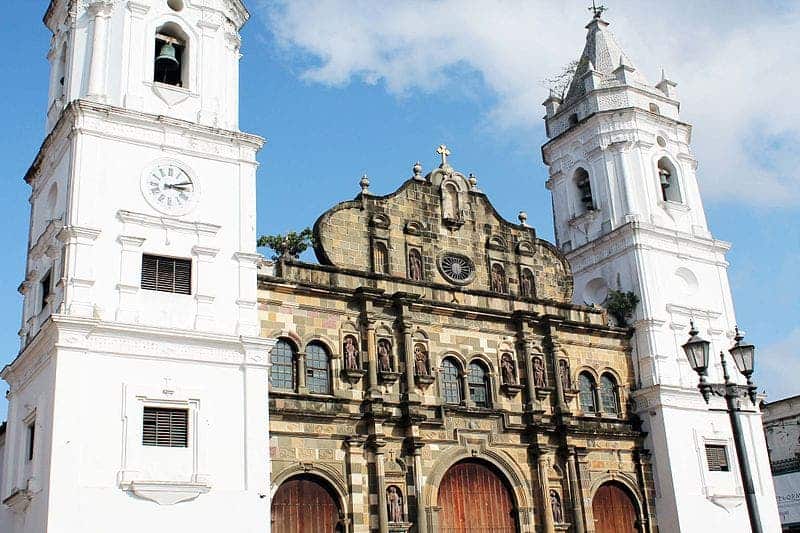Roughly 120 clusters of orchid bee nests were discovered in Panama, during restoration work on a local cathedral. The finding is particularly interesting as the nests hail from the 19th century, offering researchers a unique look at how local ecosystems evolved over time.

Image via Wikimedia.
The cathedral in question is the Catedral Basílica Santa María la Antigua de Panamá, also known as the Sacred Heart Cathedral, in Panama City. Work on this place of worship began in 1688, and it has gone through several rounds of restoration work since then. Luckily for us, a group of bees has been with the cathedral throughout this journey. Around 120 clusters of their nests, hailing from the 19th century, were discovered during recent restoration work on the cathedral’s altarpiece.
Polen in unusual places
The find allowed researchers from the Smithsonian Tropical Research Institute in Panama City and restoration groups from Panama and Portugal to estimate what the local environment looked like in the 19th century.
For the study, the team analyzed pollen particles retrieved from the nests, identifying 48 plant species among 23 distinct families. The authors write that this flora reconstruction can give us precious insight into natural ecosystems, their component species, and how human activity shapes the two.
The species that built the nests was likely Eufriesea surinamensis. Despite being generally secretive and preferring wild settings, some orchid bees are known to take up residence in areas that see a lot of human activity. However, finding so many of their nests in the Cathedral was quite a surprise.
The building underwent restoration work (completed in 2018) in preparation for the consecration of a new altar by Pope Francis; the nests were discovered during this time. Many of the pieces of nest were covered in gold leaf and other golden material applied during earlier restoration works following a fire (carried out in between 1871 and 1876), which allowed the team to reliably determine their age.
Female E. surinamensis bees tend to build their nests quite apart from each other, which makes them difficult to locate in the field. As a result, the species hasn’t been studied in-depth. However, we do know quite a lot about pollen — and the 19th-century bees left some over in their nests for us to find. After analyzing the pollen, the team determined that at the time, Panama City was surrounded by patches of tropical forests that could support larger populations of bees.
The research helped us better understand the biology of orchid bees and the local floral make-up around Panama City in the 19th century. The findings further help highlight how environments are modified by human behavior by offering us a baseline from two centuries ago. The last tidbit is especially important in today’s context, the team adds, as it may help us better understand, track, and predict the rapid environmental changes we’re causing.
The paper “Flower use by late nineteenth-century orchid bees (Eufriesea surinamensis, Hymenoptera, Apidae) nesting in the Catedral Basílica Santa María la Antigua de Panamá” has been published in the Journal of Hymenoptera Research.









